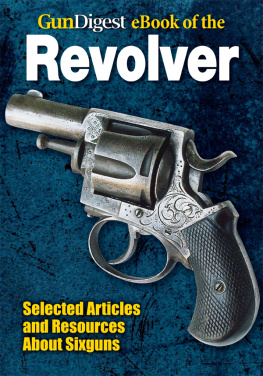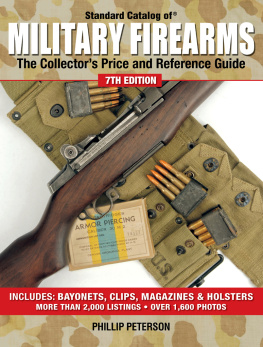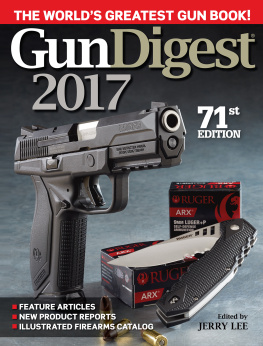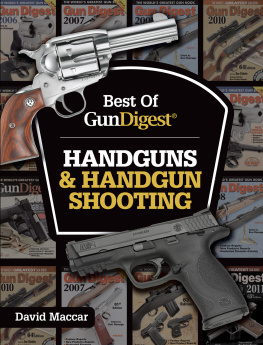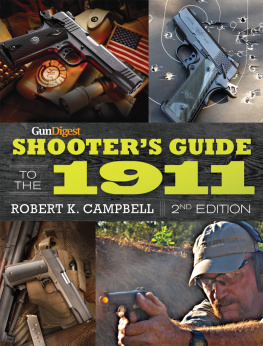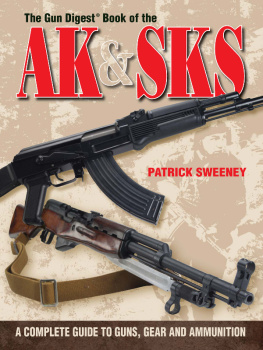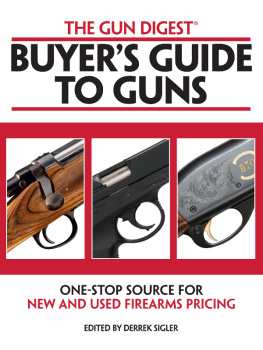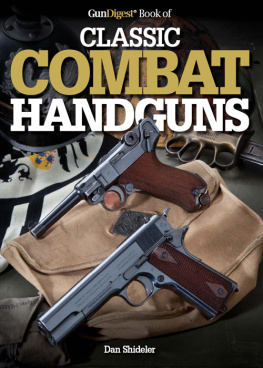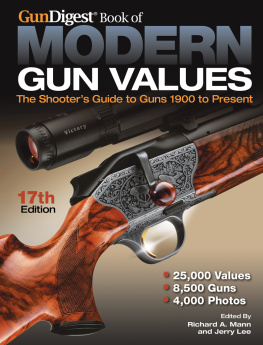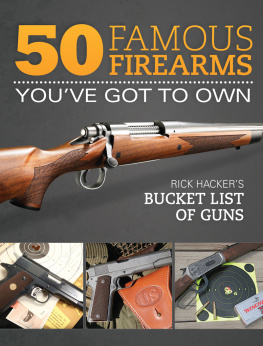Copyright 2010 F+W Media, Inc.
All rights reserved. No portion of this publication may be reproduced or transmitted in any form or by any means, electronic or mechanical, including photocopy, recording, or any information storage and retrieval system, without permission in writing from the publisher, except by a reviewer who may quote brief passages in a critical article or review to be printed in a magazine or newspaper, or electronically transmitted on radio, television, or the Internet.
Gun Digest Books, an imprint of F+W Media, Inc.
Krause Publications 700 East State Street Iola, WI 54990-0001
715-445-2214 888-457-2873
www.krausebooks.com
Introduction
Welcome to the Greatest Guns of Gun Digest!
Tt's been quite a job, selecting the cream of the crop of the greatest gun annual of all time. After all, Gun Digest was first published in 1944 and has now reached its 65th edition, which gives us quite a lot of material from which to choose.
In selecting the pieces to appear in this volume, we applied the tried-and-true formula that seems to have guided Gun Digest's editors since the beginning: try to include stories about Handguns, Rifles, Shotguns, and Military Arms. Of course there will be some overlapping, and it just wouldn't be a Gun Digest publication without the unique blend of history, scholarship, entertainment, and educated opinion that you'll find in the following pages.
Gun Digest has always been about the guns, first and foremost. In fact, Gun Digest has always followed a policy of covering as many gunmakers, major and minor, as its pages can possibly accommodate. Few publications indeed would include a feature on the Rifleman's Rifle, the Winchester Model 70, and then in the same edition discuss the Garcia Bronco, an ultra-utilitarian skeleton-stocked rifle of decidedly unlovely aspect but that sort of editorial democracy has always been one of the hallmarks of Gun Digest. And we intend that it always shall be.
Argument, disagreement, lack of consensus all these are distinguishing characteristics of the American gun-owning public. Don't be surprised, then, if your favorite great gun has eluded inclusion in these pages. Every gun featured herein is somehow remarkable, whether it is a high-dollar collectible like the Colt-Walker revolver or a more minor celebrity such as Remington's Nylon 66 .22 rifle. We have made no attempt to claim that this gun or that gun is the greatest of its type, only that every gun featured here is, truly, a great gun.
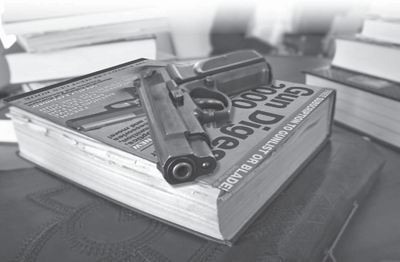
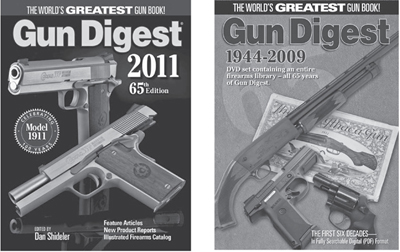
Is the Browning T-Bolt .22 a great gun? We think so, and we think you'll agree if you're ever fortunate enough to experience the silky-smooth cam action of its straight-pull bolt. How about the Astra 400? Certainly! After all, this oddlooking duck showed us how far a straight-blowback action could be taken in a handgun. The Darne shotgun? It's a fairly scarce make, agreed, but it shows that the simplest breech system isn't necessarily always the best, at least as far as aesthetics and gracefulness are concerned.
By now you get the point. Often it's a single feature that makes a gun great, like the foolproof rotary magazine on a Ruger 10/22. In other cases it's a concatenation of separate noteworthy features, as we see in the 1911 pistol. In other still cases, it's the creation of a totally new class of firearm, such as the M16A2.
Then, of course, there's the brilliance of Gun Digest's editorial contributors to be considered. Col. Charles Askins, Elmer Keith, John Amber are celebrated even today as being among the greatest gunwriters of all time, but for each one of these sterling talents there's a Les Bowman, a Keith Schmidt, or a Robert A. Burmeister who certainly merits remembrance. We are proud that the work of these great American sportsmen lives on, and will live on forever, in the pages of Gun Digest.

Gun Digest has always been proof, if proof were needed, that you needn't be shooting to enjoy guns. Reading about them can be almost as enjoyable and if you enjoy reading this compilation from the past, we have succeeded in our goal. So relax with your favorite beverage at your elbow and a good dog at your feet and relive some of the greatest guns of Gun Digest.
Cheers!
Dan Shideler
Editor
Gun Digest
August 2010
1952
America's First Cartridge Revolver
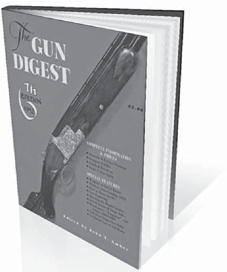
by HERSCHEL C. LOGAN
THE LITTLE Smith & Wesson 22 caliber seven-shot rim-fire revolvers, scarcely larger than a toy when compared to the modern target arm, are of the utmost interest to all who love guns. They were the first successful breech-loading revolvers in America to use metallic cartridges, and as a result they became the forerunner of all present-day revolvers. From this historical standpoint alone, it becomes quite obvious why interest in these early pieces is rapidly increasing.
It is a logical conjecture that, because of the size and caliber of these guns, they were used considerably more than guns of larger caliber requiring more expensive ammunition. As a result, many were lost and others damaged beyond repair, until today the First Models with the oval-type frame are choice collector's items, rarely found. Due to the important position they hold in the history of the modern revolver, it may not be amiss to give a brief background of these interesting and significant handguns.
Dismayed because fulminate of mercury was corroding the barrels of the Volcanic arms his firm was producing, Daniel B. Wesson of Smith & Wesson set himself to a new task. This was to discover if it were possible to correct the defects of the self-contained bullet then in use in S & W guns. The result of his study was a cartridge which consisted of a metal case containing bullet, powder, and fulminate. A patent (No. 11,496) was granted to Horace Smith and Daniel B. Wesson on August 8, 1854, for this cartridge.
It has heretofore been assumed that the first issue of the first model was designed for use with BB or CB caps containing fulminate but no powder. However, the first Smith & Wesson patent papers for a cartridge describe one containing both fulminate and powder. This cartridge was developed and a patent applied for in 1853. The patent was granted in the following year. When it is recalled that the first model was placed in production in 1857, it is hardly conceivable that they would use a Floberttype BB or CB cap when S & W had had a three-year period in which to perfect their own cartridge. And, after all, it was the development of the cartridge in order to eliminate the use of fulminate alone which led to the invention of the S & W breech-loading revolver.


